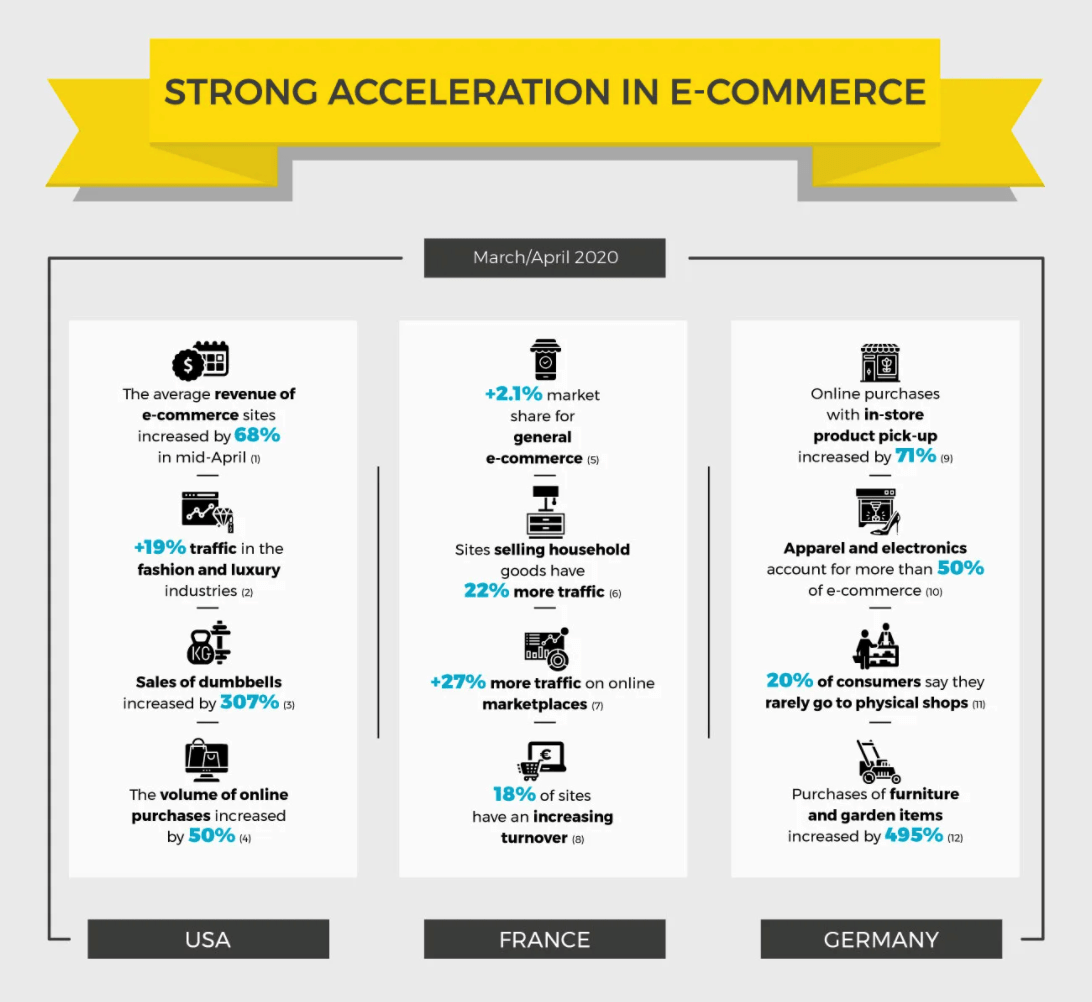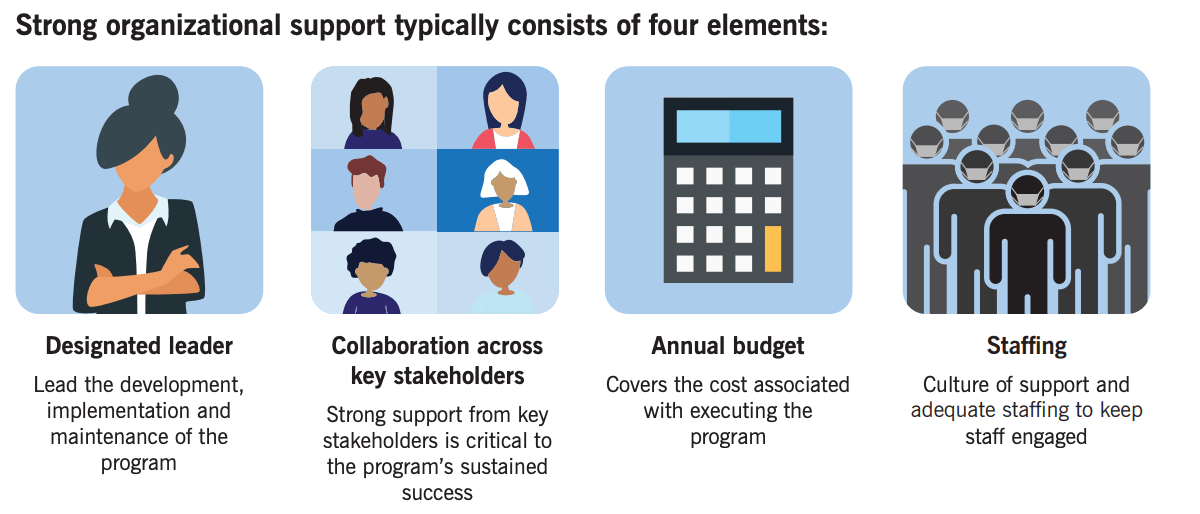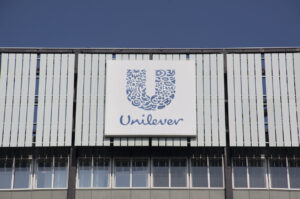USA Today admits op-ed didn’t meet standards, Clorox and Cleveland Clinic partner on cleaning guide, and social media teams celebrate World Emoji Day
Also: NASA refutes misinformation, take our brand storytelling survey, how e-commerce has grown during COVID-19, and more.
Hello, communicators:
NASA recently refuted a rumor that it found a new zodiac sign:
👀 We see your comments about a zodiac story that re-emerges every few years. No, we did not change the zodiac.
When the Babylonians invented the constellations 3,000 years ago, they chose to leave out a 13th sign. So, we did the math: https://t.co/DQOs5VSjT7 pic.twitter.com/WlblguobGT
— NASA (@NASA) July 17, 2020
The agency also started off its Tumblr post explaining the differences between astrology and astronomy with this gem: “We didn’t change any zodiac signs, we just did the math.”
Rack up another win for dispelling misinformation. When you’re faced with a similar issue, consider combining good-natured humor with information, when appropriate. That will help your correction become more palatable—and shareable.
Here are today’s top stories:
USA Today says op-ed ‘did not meet’ its standards
Following growing criticism, USA Today’s editorial page editor, Bill Sternberg, added a note to an opinion piece written by the White House’s Peter Navarro with the controversial headline: “Any Fauci has been wrong about everything I have interacted with him on.”
Sternberg’s note read, in part:
As is our longstanding tradition, to give our readers another point of view, we reached out to White House trade adviser Peter Navarro, who has been critical of Fauci. Navarro provided a response that was published as an Opposing View paired with our editorial. We dealt directly with Navarro and do not know whether he spoke to anyone else at the White House about his statement.
Navarro’s response echoed comments made to other news outlets in recent days. We felt it was newsworthy because it expanded on those comments, put an on-the-record name to the attacks on Fauci, and contradicted White House denials of an anti-Fauci campaign.
However, several of Navarro’s criticisms of Fauci — on the China travel restrictions, the risk from the coronavirus and falling mortality rates — were misleading or lacked context. As such, Navarro’s op-ed did not meet USA TODAY’s fact-checking standards.
USA Today also published a fact-check article that reviewed Navarro’s claims. The publication has not addressed the situation anywhere else, including to other reporters or on social media.
Why it’s important: Fact checking is crucial for reporters, but it’s also important for communicators across roles and industries, especially as you seek to fight against misinformation and protect your organization’s reputation. Sharing incorrect or misleading claims can quickly diminish trust and weaken the relationships you’ve built with stakeholders.
SOCIAL BUZZ
It’s World Emoji Day, and brands including Red Lobster, Custard Factory and Yorkshire Tea are already celebrating on Twitter:
Happy World Emoji Day! Which one's your fav? 🦞 🍤 🦀 ? pic.twitter.com/bkJvTeKxxY
— Red Lobster (@redlobster) July 17, 2020
#WorldEmojiDay2020 🍮 🏭 pic.twitter.com/o3F1IF9Foh
— Digbeth Estate (@digbethestate) July 17, 2020
🫖
The teamoji has landed! All other emojis can now be thrown in the bin.
However (this is awkward) you can't use it on most devices yet, which means you're probably seeing 🖾 or ⍰ at the start of this tweet. So maybe don't bin them just yet…
Read on 👇#WorldEmojiDay pic.twitter.com/6a9EGRXbWF
— Yorkshire Tea (@YorkshireTea) July 17, 2020
Some social media teams, such as those at Verizon and RED, are showcasing the power of the emoji to connect with people and to start important conversations:
Today, we celebrate the emoji. 😀 👍 🤬 🤪 A simple yet powerful series of emotional icons that can convey emotions stronger than your standard text message. #WorldEmojiDay #fiosfam #Verizon24X7 pic.twitter.com/qExEju8lxp
— Verizon Support (@VerizonSupport) July 17, 2020
How @RED money 👊 fights AIDS: Emoji Edition
💊 Treatment & Prevention Services
📚 Sexual Reproductive Health Education
👩🏽⚕️ Testing & Counseling
👫 Youth Engagement Programs
🙌 and more…#WorldEmojiDay— (RED) (@RED) July 17, 2020
If you’re taking part in today’s “holiday,” consider ways you can highlight your organization’s initiatives as well as your employees. Don’t just focus on your products or services, but instead, provide valuable information or an entertaining engagement.
MEASURED THOUGHTS
Weida published an inforgraphic that shows how much e-commerce has grown during COVID-19, reporting that 37% of consumers in the United States plan to spend more through online shopping and 90% of e-commerce buyers will continue to purchase online after COVID-19 restrictions are lifted.
This means that organizations across industries can tap into new consumer opportunities. Weida reported the average e-commerce website’s revenue increased by 68% in April 2020:

Image courtesy of Weida Group.
You can view the entire infographic here.
CRISIS LEADERSHIP BOARD
Looking for more insight on how to address the current global crisis and lead your organization into a strong recovery?
Join Ragan’s Crisis Leadership Board to network and brainstorm with peers, get the latest intelligence and research, and start to strategize for the future of your organization.
Learn more about this exclusive membership here.
Cleveland Clinic and Clorox partner on cleaning guide
The Clorox Company teamed up with Cleveland Clinic to help communicators across organizations and industries prepare for re-opening and adjust to the “new normal” with a cleaning program guide.
Clorox’s press release read, in part:
This free online guide, “Six Building Blocks of a Robust Cleaning and Disinfection Program,” is intended to help employers train personnel, select effective products, and develop robust cleaning and disinfection processes to create and maintain safer environments. Future areas of collaboration may include research and development as well as educational initiatives for businesses and industries, all in the interest of promoting public health.
The guide contains information to develop strategies and procedures, and also includes graphics to easily convey key takeaways, such as the following:

Image courtesy of Cleveland Clinic.
Cleveland Clinic’s chief executive and president, Tom Mihaljevic, M.D., said:
Cleveland Clinic is committed to health, safety and infection prevention. Our dedication has only become stronger amid COVID-19, as we have established processes proven to keep people safe. We believe it is our responsibility to share our expertise with the broader communities and businesses we serve.
Why it’s important: Now more than ever, communicators are looking to industry leaders and their peers for advice, answers and ideas to implement effective policies, procedures, strategies and campaigns that can help them address the COVID-19 crisis as well as Black Lives Matter and beyond. Where possible, partner with organizations and communications peers both within and outside of your industry, so you can exchange ideas and support one another, no matter your resources or budget.
TAKE OUR SURVEY
Have your storytelling efforts shifted during COVID-19, or as your organization responds to the nationwide movement for racial equality and inclusion? We want to hear how you’re telling your brand’s story, including what messages you’re using and the content formats and channels you’re focusing on to strengthen your reputation and effectively reach stakeholders.
Please take our survey here. All responses are confidential and anonymous.
Survey findings will be released at Ragan’s Brand Storytelling During a Crisis Virtual Conference, Aug. 4-5. You can hear the results—and learn how to tell your brand’s story to help you thrive in our “new normal”—with speakers from Con Edison, Google, Experian, Minnesota Timberwolves, Crayola, Marriott International, Girl Scouts of the USA, Cleveland Clinic and more.
WHAT YOU SAID
We asked what type visual content nets you the most social media engagement, and more than 51% of you said photos and images capture audiences’ attention. Nearly 29% said memes and GIFs pay off the most, while almost 18% said video content gets the most engagement. Only 2% said charts and infographics are at the top of the list.
Which type of visual content grabs you the most engagement on social media? (Question thanks to @blherrman.)
Share your experiences with us under #DailyScoop.
— PR Daily (@PRDaily) July 16, 2020
Thanks again to Brandi Herrman, instructor of business administration at Columbia College, for the suggestion. Is there a question you’d like us to ask in an upcoming poll? Let us know!
SOUNDING BOARD
What is your workplace focusing on in terms of employee skills training and development during COVID-19 and beyond?
What is your workplace focusing on in terms of employee skills training and development during COVID-19 and beyond?
Share your thoughts with us under #DailyScoop, and we'll share following the weekend.
— PR Daily (@PRDaily) July 17, 2020
Share your thoughts below and under #DailyScoop hashtag.








Goodwill they deserve and earn but judge whether Cleveland Clinic, Memorial Sloan Kettering Cancer Center and America’s other great hospitals aim high enough to get the rewards that new PR opportunities could bring them.
WHAT COULD DONORS GIVE?
Memorial Sloan Kettering recently moved into a huge donated building said to cost $1.5 billion (with a “b”). Cleveland Clinic must have been rewarded lavishly when Iran’s chief went to Cleveland Clinic for major cancer treatment. A Mideast oil country once gave over a billion to Weill Cornell.
Of every five American children who get cancer which was once a like a death sentence, today four actually recover! So judge whether a billion+ donation of a new research center could save over a million lives a year worldwide, bring worldwide media coverage—now and every six months when there’s a progress briefing—and save the donor MANY billions.
WHO COULD DONATE A BILLION DOLLAR RESEARCH CENTER?
Facebook just won a European Union case cancelling a fine on the company of over $14 billion. Can anyone doubt that Amazon, Google, Lockheed, Walmart, Johnson & Johnson, Pfizer and other U.S. companies could face verdicts or unwise legislative hits that could cost even more than $14 billion, perhaps double that much? There is new reality about what great PR firms can try for and accomplish.
Can anyone doubt that over 100 million Americans would fiercely oppose our government doing anything to injure a company that funds a “Pfizer Institute for Child Cancer Cures”?
WHY DONATE A BILLION DOLLAR RESEARCH CENTER?
For the same reason that a pharma company spends over a billion to develop a new drug, and an automotive company spends two or three billion to develop a new car: because the risk, big as it is, looks like less than a vastly bigger potential reward.
WHAT DECIDE WHETHER A COMPANY GOES FOR IT?
It’s like DIVERSITY. Does management actually want it or is the desire to seem “diversity-conscious enough” and avoid trouble?
If the real goal is to just avoid trouble, then instead of diversity including Asians, LGBTQ, handicapped and other minorities, management may be happier to just add high-profile blacks and women, the two groups that have the most activists.
BUT if the goal is to really do it, common sense is to call for proposals from Porter Novelli, Edelmen and other top PR firms with brilliant diversity departments, then listen and decide.
It’s also like WASHINGTON PR. Although reports of PR success are often based on meetings with important government leaders—or even better, ”VERY important government leaders” like cabinet secretaries and congressional committee leaders who seem to listen patiently (but briefly)—true success may be in the answer to this question: did we WIN?
Was a bill that would have hurt us passed or defeated? If we’re a mideast country, did the U.S. president just talk about the “long friendship between our countries” and seem to care or did he say the U.S. will work for our admission into NATO, protecting us from a nuclear Iran and Russian-financed “revolutions” led by “freedom fighters”?
Some top managements don’t even want to hear about negative possibilities just as a U.S. president may fire aides who seem “disloyal”.
But perils to corporate and national survival are real just like the coronavirus is real. Just as the right vaccine could protect our families, a PR-related donation to Cleveland Clinic or another famous hospital could save a major company or country from needing what even a PR ventilator can’t do.
Increasingly, top PR firms can try for more and accomplish more, sometimes even a client’s survival.
Correction: Facebook’s voided fine was of course $1.4 billion not $14 billion .